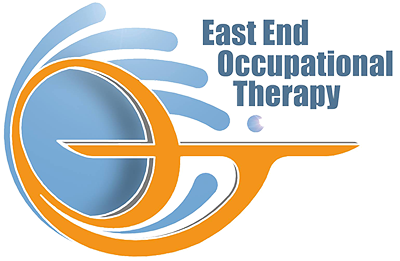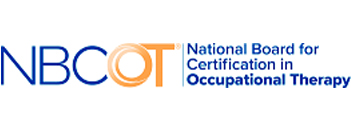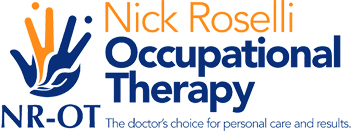Hand Therapy in Seaford
Welcome to East End Occupational Therapy Hand Therapy in Seaford

East End Occupational Therapy is a specialized hand and upper extremity rehabilitation practice that has been dedicated to providing a complete and comprehensive range of occupational therapy services to its patients. The team at East End Occupational Therapy Hand Therapy in Seaford strives to deliver the best evidence-based care possible through our client-centered approach. Not only is our practice in direct contact with your physician from the initial examination through your discharge, but we also work closely with your surgeon to develop an optimal plan of care with the goal of restoring your functional independence. Most of us rely on our hands routinely and it is not until we suffer an injury that we recognize the importance of our hand function when performing daily living skills.
East End Hand Therapy in Seaford
Understanding Hand Injuries in Construction
Your hands are your most important tool. Construction worksites can be a focal point for hand injuries. That is why it is important to understand and prevent injuries from occurring. According to the U.S. Bureau of Labor Statistics, each year more than a million workers are sent to the emergency room because of hand injuries. The estimated costs can skyrocket up to $70,000 for injuries such as severed tendon, according to the National Safety Council, keeping in mind that indirect costs such as time off aren’t counted for. If you are currently experiencing a hand injury from the workplace and seeking hand therapy in Seaford, then contact us at East End Occupational Therapy. Our team will assess your hands and develop a treatment plan right for you and get you back to work.

Common Types of Hand Injuries
A construction worksite can provide a wide variety of threats to your hands, which can include burns, bruises, or cuts. However, other serious injuries that are common in construction include:
- Lacerations-Deep cuts or tears in the flesh.
- Crushes- A body part such as your hand, arm or wrist getting caught between heavy machinery or equipment.
- Avulsions- Occurs when a bone is being pulled from one direction and a tendon/ ligament being pulled from another.
- Punctures- Nails, needles, knives, tacks, or other sharp objects penetrating the skin and causing a wound deeper than a cut or scrape.
- Fractures- Break in one of the bones of your hands because of either a trip, fall, or a crush.
- Detachments- Serious injury involving either the hand or fingers being pulled or separated from the body.
What Causes Hand Injuries?
Regardless of age, gender, or the industry you work in, everyone is at risk for hand injuries. The main cause of hand injuries in the workplace is the lack of protective equipment. Most injuries occur because workers aren’t wearing gloves when handling potentially hazardous equipment.
Lack of or disregard of safety education and procedures is common. Less-experience or entry-level workers are more prone or at higher for injuries due to their lack of on-the-job experience or an increased sense of pressure to get the job done quickly. Employers should take special attention to entry-level works.
Lastly, hand injuries can also occur when an employee is either distracted or not focused.
Prevention
Your hands are important because they are critical to your everyday life. That is why injuries need to be avoided when they can. Our hand therapy in Seaford can help you find ways to get your hands back to normal conditions and back to work. Here are some ways you can prevent injuries happening at your worksite.
Providing and wearing personal protective equipment– Employers should provide protective equipment such as gloves. Keep in mind the type of gloves your employees may need depending on the type of work they do. For example, a synthetic rubber glove may protect against burns but not against abrasions or cuts.
Provide safety training– Employers should implement a training program for entry-level workers who may be unfamiliar with common equipment. Employers should also implement a wellness program for workers over the age of 55. Despite their risk of injury being lesser than those with a lack of experience, their recovery time is longer if an injury does happen.
Have an open door– Employers should provide a platform or space for employees to ask questions or voice their concerns about any safety standards they may have.
How can East End Occupational Therapy? If you recently experienced a hand injury and seeking hand therapy in Seaforc. Contact us today to set up an appointment. Our team at East End Occupational Therapy will assess the issue and develop an individualized treatment plan that is right for you.
What Does Hand Pain Indicate?
Hand pain can be a frustrating problem with many different causes. While there are numerous potential sources for hand discomfort, many of them have similar symptoms, and the treatment varies only slightly from one to another. However, it is important to distinguish between each cause to avoid future injuries and discomfort best. The following will describe some of the more common causes of hand pain. This is what can be done to relieve the symptoms. Looking for Hand therapy in Seaford, look no further than East End Occupational Therapy today!
Common Causes Of Hand Pain

- Carpal Tunnel Syndrome (CTS) – CTS is a condition that occurs when one’s median nerve, which begins in the neck and runs through the shoulder, wrist, and into the fingers, becomes pressed or squeezed at the wrist. This pressure on this specific nerve can cause pain, tingling, and numbness in the thumb, index finger, and middle finger.
- Trigger Finger Or Trigger Thumb – Trigger finger occurs when one’s tendon that bends or flexes your fingers gets stuck in a bent position. The result is that one’s finger gets stuck in a bent position and then suddenly springs open, sometimes with force. This can be painful, and the condition usually affects only one hand.
- Arthritis – is prevalent among people over the age of 55, and it can cause several different problems. Arthritis can be difficult to detect because the symptoms, such as stiff joints and pain that tend to worsen in damp or cold weather. This can easily be attributed to other conditions.
What To Do If Your Experiencing Hand Pain
There are some specific things one can do if they are experiencing pain in their hands. For instance, one should try to avoid repetitive hand motions if possible. If you are typing or playing a video game for extended periods, it is important to take frequent breaks. Which will help your muscles relax and decrease the chances of developing future aches. Exercises stretching your fingers are another good idea and can even be done while typing. Finally, applying heat to your hands and taking over-the-counter pain medications such as ibuprofen will help reduce any discomfort caused by arthritis or other conditions. Our staff can help with Hand therapy in Seaford for your hand conditions.
Contact Us For Hand Therapy in Seaford
As you can see, there are a number of different causes for hand discomfort. Fortunately, most cases of hand pain can be treated fairly easily. However, it is important to remember to see a doctor if the discomfort persists because it may be a sign of something more serious such as arthritis or Carpal Tunnel Syndrome. Schedule an appointment for hand therapy in Seaford with our staff today!
Which Exercise Is Best For Hand Pain?

It can be difficult to continue with your normal exercise routine when you injure your hand, wrist, or upper extremity. While it’s always best to check with a doctor before beginning any new exercise program, several exercises can help build strength in the injured area while still keeping it mobile and flexible. Here are some of the best exercises for hand pain. Visit East End Occupational Therapy, our Hand therapy in Seaford, today!
There are several ways to exercise your hands. It would help if you always avoided movements that cause extreme pain or numbness in your hands. Additionally, you should not begin any new exercise routine without first consulting a doctor to see if it’s safe for your specific injury. That being said, here are some great exercises that can be very beneficial in the treatment and prevention of injuries to your hands, wrists, and upper extremities:
Hand Pain Exercises
- Finger extension is important in the treatment of many injuries. This exercise uses a small Dyna-Band device, which can be inflated to different strengths depending on the desired level of difficulty. Begin by looping one finger through the band and gently pulling it towards you until resistance forms.
- Finger Curls – For this exercise, you will need a small cup or paper bowl, something with a fairly small circumference so that you can easily curl your fingers around it. Fill the bowl with rice or dry beans, whatever you have available to make the exercise more challenging. Begin by sitting in a chair with your injured arm resting on your leg and your palm facing up. Place the small cup at one end of your hand and use your fingers to curl around it. Squeeze as hard as you can for 10 seconds, then release and relax your fingers completely. Continue this motion for 30-60 seconds before switching arms.
- Wrist Rolls – Begin this exercise by sitting on a chair with your injured arm resting on your leg, palm facing up. Roll your wrist gently in a circular motion, beginning with small circles and gradually increasing to large ones. Continue this motion for 30-60 seconds before stopping to rest at the bottom position for one minute. Repeat five times.
- Finger Stretch – This exercise is a great way to stretch and strengthen your fingers and hands. Begin by sitting in a chair with your injured arm resting on your leg, palm facing up. Flex your fingers so that the tips of your thumbs touch each other and stretch them outward until you feel tension but no pain. Hold this position for five seconds before relaxing for 10 seconds: repeat ten times, three times per day.
East End Occupational Therapy
When you’re ready to begin a new exercise routine, always do so slowly and carefully. Start with movements that you can complete easily and only increase the intensity of your workouts as your strength improves. While specific exercises for hand pain might not be necessary after an initial period of recovery from an injury, they are vital in maintaining flexibility and strength in your hands. If you’re looking for more great exercises, check out this website.
East End OT – Hand Therapy in Seaford
This is a great set of exercises that are designed to strengthen the hands. While they are not necessarily meant for treating hand injuries, they can help prevent damage and increase hand health. Exercises should always be done carefully to avoid further pain or aggravation of an existing injury. If you have chronic hand pain, you are probably best served by consulting a doctor for more specific treatment options. However, these exercises can be done safely at home to strengthen the hands and maintain general flexibility. Visit East End Occupational Therapy, our Hand therapy in Seaford, today!
Hand Injuries
Made up of an intricate network of bones, muscles, nerves, ligaments, and tendons all working together to allow for movement, the hands are an impressive anatomical structure. However, due to their complexity, even the slightest injury can throw off the entire functionality of your hands. To prevent this from occurring, patients should seek out hand therapy in Seaford as soon as an injury takes place. Our team at East End Occupational Therapy will help nurse your hands back to full health, and prevent any long-lasting complications from taking place.
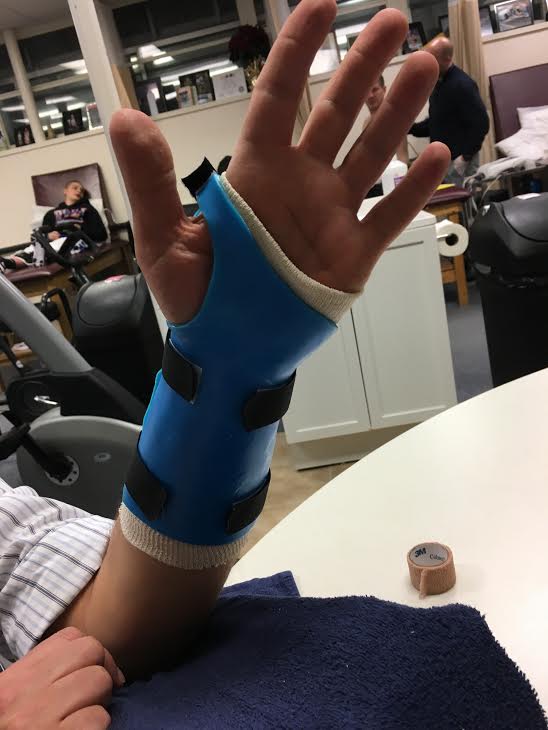
Common Hand Injury Causes
The hands play a role in almost all of your daily activities. Due to this fact, it stands to reason that there are a lot of different causes that can lead to injuries to these body parts. Below are examples of the six general categories hand injury causes are broken down into, all of which can be helped with hand therapy in Seaford.
- Lacerations.
- Fractures and dislocations.
- Soft tissue injuries.
- Burns.
- Infections.
- High-pressure injuries.
Sprains And Tears
There are numerous ligaments and tendons spread throughout the hand and wrist that allow for proper movement. Ligaments are responsible for bone-to-bone connections, while tendons attach muscles to bones. When these tissues become overused or are forced to stretch outside of their normal range of motion, they become sprained or torn. This damage to the ligaments and tendons will compromise hand functionality, and quickly decrease your quality of life. Depending on its severity and location, a sprain or tear can lead to the following symptoms:
- Limited range of motion.
- Pain when resting or moving.
- Swelling and inflammation.
- Difficulty with grasping and holding.
Breaks And Fractures
Breaks and fractures can take place to any of the bones in your hands and wrist. When you’ve sustained an injury such as this in these areas, you must seek out treatment right away. Casting your hand and wrist will ensure that the bones heal correctly, eliminating the risk of misalignment that requires surgery to correct. When proper rehabilitation does not take place, patients open themselves up to issues such as:
- Damage to the nerves and blood vessels.
- The development of osteoarthritis.
- Prolonged stiffness or aching in the injured area.
Mallet Finger
Mallet finger is a condition that takes place in the tendons in the tip of your fingers and thumbs. When this condition is present, it means that the tendon has become damaged, usually as a result of it being hit with a direct force. This damage leads to the finger drooping and being unable to point out straight. By utilizing our service of handy therapy in Seaford, you’ll see a realignment of the damaged tendon and your finger, allowing the below symptoms to be eliminated:
- Bruising.
- Redness.
- Swelling.
- Tenderness.
- Inability to straighten your fingertips.

De Quervain’s Tenosynovitis
If you’ve recently begun to experience pain or swelling near the base of your thumb, it could be a sign that you’re dealing with de Quervain’s tenosynovitis. This condition is a painful one that affects the tendons on the thumb side of your wrist. Chronic overuse of the wrist is believed to be the culprit of this condition. However, other causes that can lead to damage and pain to these tendons include:
- Sustaining a direct injury to your wrist.
- The development of scar tissue that hinders the tendon’s range of motion.
- Inflammatory arthritis.
Dislocated Fingers
One final hand injury our team would like to mention is dislocated fingers. Each finger of your hand has three joints, while each thumb has two. When the bones of the fingers and thumbs become misaligned from the joint, this is when a dislocation takes place. Though this injury most commonly takes place in the middle joint of the finger, all joints are subject to suffering from it. The most common causes of dislocations are sports injuries, falls, and accidents that cause a crushing blow to the fingers. No matter how it was sustained, hand therapy in Seaford can be used to ensure the area is realigned. If you begin suffering from the below symptoms, contact our team for help right away:
- Finger bones appear dislodged.
- Swelling or bruising around the joint.
- Pain around the joint.
- Inability to move your finger.
Patients dealing with any type of hand injury can find difficulty completing once simple tasks. To help stop this from happening, our team at East End Occupational Therapy will administer hand therapy in Seaford to patients in need. To learn more about hand injuries, and how we will help, contact us today.
Have you noticed swelling or a lump around your wrist? Have you been experiencing pain around your wrist making it difficult to conduct your daily activities? Then you may have a ganglion cyst. If you are seeking hand therapy in Patchogue NY, for your ganglion cyst then contact us today at East End Occupational Therapy, our team will evaluate the affected area and develop a treatment plan to help you get rid of the cyst in your hands.
What is a Ganglion Cyst? – Hand Therapy in Seaford
A ganglion cyst is a small round fluid-filled lump or sac that forms over your joints or tendons such as:
- Hand
- Wrists
- Foot
- ·Ankles
It is commonly occurring around hands and wrist. One large or multiple smaller cyst can develop. Multiple cysts can give the impression of more than one. They appear in the back of the wrist but other sites include:

- Fingertips below the cuticle.
- Outside of the ankles or knees.
- Top of your foot.
- The base of the fingers.
- The palm side of your hands.
They mostly occur in women or people who use their wrist in repetitive motions such as a gymnast. More common for people between ages 20 – 40 years old, rarely ever in children under the age of 10.
The cyst may feel firm or spongey when touched, depending on the size. They are common and usually go away without any treatment.
Causes
The Ganglion cyst’s causes are still unknown. However, trauma can cause the tissue in your joints to break down, causing cysts to form. Accumulation of fluids is a result of overuse and injury.
Symptoms
The most common symptom is a visible lump appearing in your tendons. Followed by pain and discomfort. Other types of symptoms include:
- Numbness.
- Swelling.
- Weakness around the joints.
- Loss of mobility.
Most cases of ganglion cyst do not require medical attention but you could benefit from receiving a medical evaluation. Our hand therapy in Seaford will be sure you have a cyst and keep you from worrying and help you develop the best plan that is right for you.
Prevention
Most ganglion cyst will go away without treatment. They are common and harmless. However, our hand therapy in Seaford will advise you to
- Avoid repetitive movement around the affected area.
- Avoid wearing shoes that touch the cyst if they appear on your foot.
- Wearing a wrist brace.
If the pain persists and becomes unbearable, surgery may be required to remove the cyst.
How Can East End OT Help?
If you’re unsure or worried about any unusual symptoms described above appearing on your hands, contact us today at East End OT. Our hand therapy in Seaford will assess the area and take the appropriate action needed.
What is Trigger Finger?
Trigger finger, also known as stenosing tenosynovitis, is a condition that affects the mobility of your finger. Mainly affecting the first two fingers, this condition causes your fingers to bend and straighten with a snap, pop, or click. In more severe cases, the finger becomes locked in a bent position. This condition can affect your functionality with the affected finger and hand, and in some cases, can even get infected. If you are suffering from trigger finger, and are looking for hand therapy in Seaford, reach out to us at East End Occupational Therapy and make an appointment today.
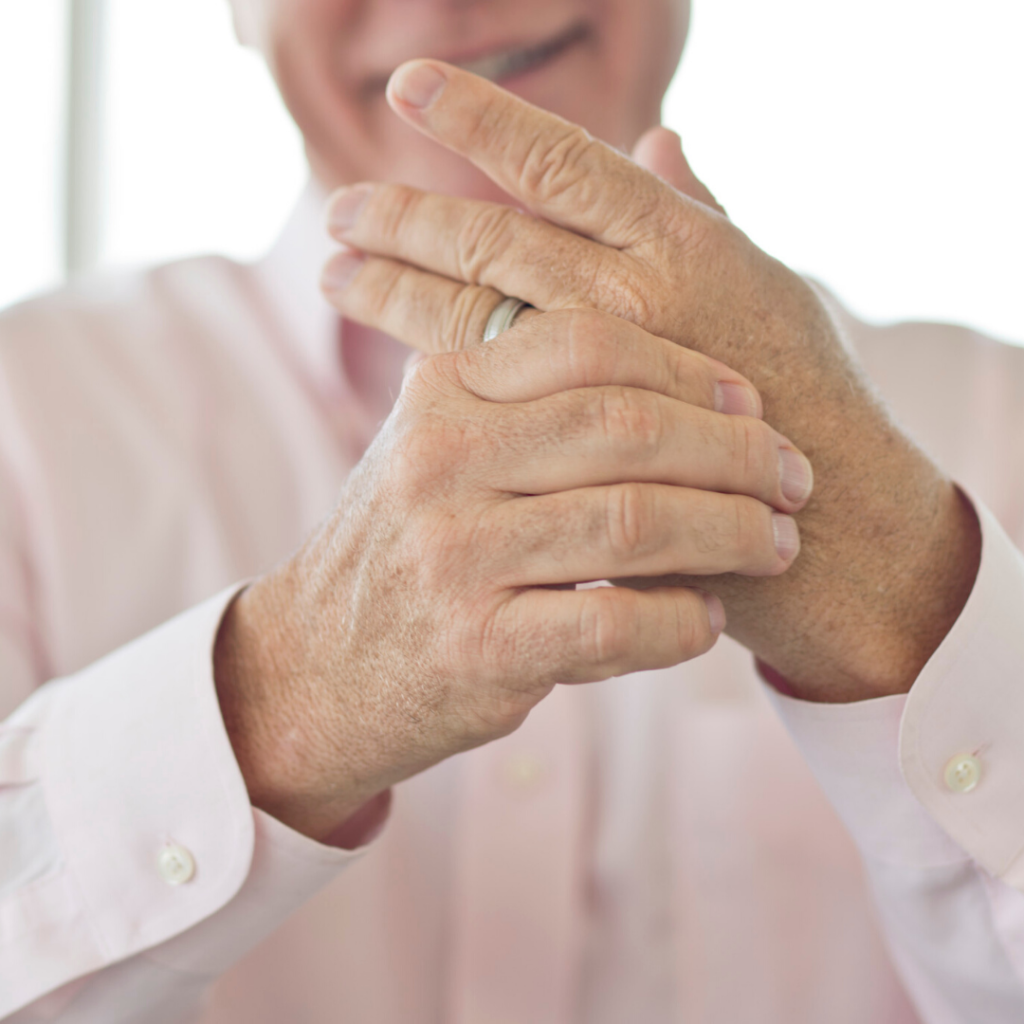
Symptoms of Trigger Finger
The symptoms of trigger finger are distinct and can range from mild to severe. Symptoms can include:
- Stiff fingers, being more noticeable in the morning
- Clicking and popping while moving the affected finger
- A tender bump at the bottom of the finger
- Finger becoming locked in bent positions
In addition to these symptoms, you may experience pain with the affected finger, while either moving the finger or when it gets locked. Your finger may also get inflamed and get swollen, red, and hot. These are signs of affection and should be seen by a doctor immediately. If you have fingers affected by these symptoms and are looking for hand therapy in Seaford to help you, contact us at East End Occupational Therapy and see how we can help you.
Causes of Trigger Finger
In your hand, there are various tendons attaching your muscles to the bone. These tendons have “sheaths” around them. Trigger finger occurs when a tendon and the “sheath” in the finger, the A1 pulley typically gets inflames or thickened, making it harder for your flexor tendons to bend. It is this inflammation that causes your finger to make the popping or clicking and can cause it to get stuck. This irritation can lead to scarring, more thickening, and the formation of the bumps. Some risk factors that can increase the chances of developing trigger finger include repeated gripping, carpal tunnel syndrome surgery, diabetes, or rheumatoid arthritis.
Treatment for Trigger Finger
Treatments for trigger fingers can be surgical or non-surgical, typically starting the later first. Non-surgical treatments include:
- Rest- avoiding activities that flare symptoms may help minor cases recover
- Splinting- splinting the finger, especially at night, can help
- Medications- anti-inflammatory drugs and relieve the pain and inflammation that causes the symptoms
- Physical Therapy- using the right techniques can reduce stiffness and improve functionality in the affected finger.
Additionally, Trigger Finger Release Surgery can be used to release the A1 pulley, causing difficulties moving the affected finger and restore function. Post-surgery care also involves physical therapy to aid with healing and restoring functionality and mobility to the finger. If you are in need of hand therapy in Seaford, reach out to us at East End Occupational Therapy and see how our team of hand therapists can help you today!
Dislocation of the PIP Joint
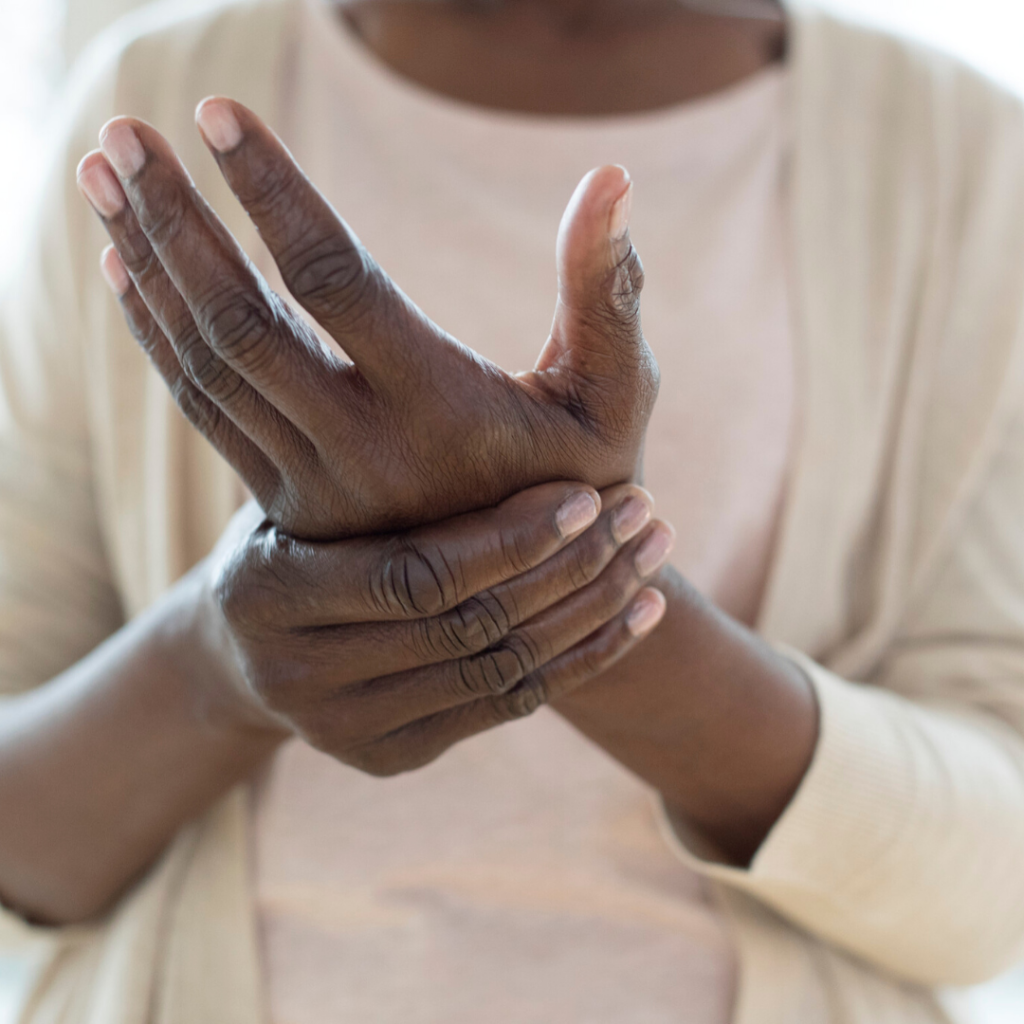
Since we use our hands constantly, injuries to the finger joints are very common. The proximal interphalangeal joints (PIP) are the middle joints of the finger. PIP joint dislocations can occur when trauma forces the bones in the middle knuckle of the finger out of place. This is often very painful and usually results in a bruised and swollen joint that barely moves, or is completely immobile. If you find yourself with a dislocated PIP joint, East End Occupational Therapy specializes in hand therapy and rehabilitation for injuries. Contact us today for hand therapy in Seaford.
Causes and Diagnosis
The most common cause for PIP joint dislocation is direct injury to the hand. The injury can happen during a fall, or while playing high impact sports. If you suspect that you have dislocated the joint, apply ice immediately, and seek medical attention as soon as possible. A hand specialist at East End Occupational Therapy will carefully examine the area by checking for pain, swelling, and mobility. An X-ray is also recommended to look for fractures. Symptoms of a dislocated PIP joint include:
- Pain in the joint
- Bruising and swelling
- Loss of joint function
- The joint appears disfigured
Treatment
When you dislocate the joint, there are nonsurgical treatment options available. Nonsurgical treatments include:
- Anti-inflammatory and pain-relieving medicine
- Splint
- Icing the afflicted area
- Bone realignment
The dislocation should be set into position immediately after the injury, either at the emergency room or urgent care facility. Immediate examination following the injury is crucial to the healing process. While PIP dislocation can cause a lot of discomfort, surgical intervention is rarely required as long as the joint is properly stabilized. If you did fracture the PIP joint and it remains unstable, you may require some form of surgery. There are minimally invasive options, such as pins placed through the skin, or more invasive options such as setting the fracture with screws. After surgery, you will need to be in a cast or splint for a few weeks for the injury to properly heal. You may also require physical therapy to regain proper function.
Physical Therapy
The most common after-effect of PIP dislocation is joint stiffness. After a few weeks of being in the splint, it should be healed enough to begin strengthening exercises to help add stability around the joint. At first, the treatments will involve controlling pain and swelling, especially if you had to have surgery. Always follow your doctor or therapist’s instructions before trying any exercises at home. Here are some common exercises that increase your range of motion and strength:
- Finger extension – With your hand flat on a surface, raise and lower the affected finger. Repeat 10 times.
- PIP extension – Place your non-injured hand on a surface with your palm up. Then, put your injured hand on top of the good hand. Using your thumb and fingers of the non-injured hand, hold below the middle joint of your injured finger. Bend and straighten the last two joints of the finger, and repeat a few times. Don’t bend it to the point of discomfort.
- Isolated PIP flexion – With the injured hand palm up on a surface, use your other hand to press down on the non-affected fingers. Bend the injured finger and hold, then straighten.
Hand Therapy in Seaford
If you have injured your PIP joint and are seeking treatment, East End Occupational Therapy has you covered. We specialize in hand and upper extremity rehabilitation and are dedicated to providing a wide range of therapy services for our patients. With services like hand therapy, upper extremity therapy, manual therapy, and custom splinting, there are plenty of treatments to service your needs. Through our client-centered approach, we will work closely with you to find a treatment plan that works best for you and your injury. Make your appointment for hand therapy in Seaford today!
